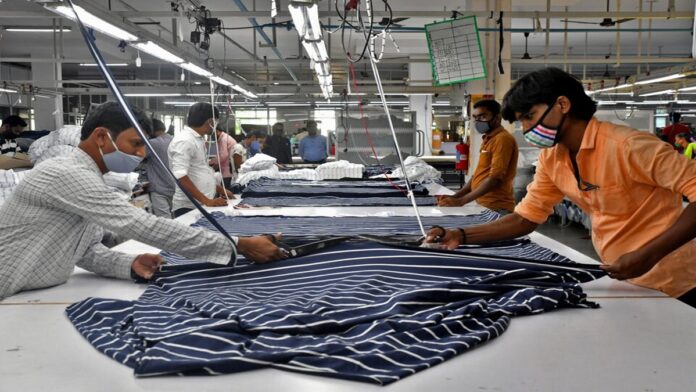By Chandrima Chatterjee
India is looking at $100 billion worth of textile exports by 2030. Ahead of Budget 2025, Chandrima Chatterjee suggests tweaks in the quality control orders for textile products and tackling non-tariff barriers faced by exporters to leverage free trade agreements to the maximum
Current status of the textile and apparel sector
The Indian textile and apparel (T&A) industry has performed well in the current fiscal, with exports up by 6.93% during April-November 2024 compared to the same period in 2023. This growth is primarily driven by the apparel segment, which saw an 11.3% rise in exports. The surge is attributed to rising demand for Indian T&A products in major markets like the
Also ReadTCS may see margin growth amid muted Q3 revenues: Analysts
USA and the EU. The industry is optimistic about sustaining this momentum through the rest of the fiscal. India is a significant player in the global textile and apparel market, ranking as the world’s sixth largest exporter in 2023. The sector accounted for around 8% of India’s total exports in 2023-24.
However, uncertainties on the continuation of some critical schemes such as the Remission of Duties and Taxes on Exported Products (RoDTEP) for advance authorisation (AA)/ special economic zones (SEZ) and export-oriented units (EOU), as well as the Interest Equalisation Scheme beyond December 31, 2024, pose a potential challenge to the growth of the industry.
Quality control orders announced for textile products
Quality Control Orders (QCOs) are regulatory directives issued by the government to ensure that specific products meet mandatory quality and safety standards. Unlike voluntary Bureau of Indian Standards (BIS) norms, QCOs are compulsory, requiring manufacturers, importers and sellers to comply with the prescribed norms.
The intent behind introducing QCOs in textiles for certain man-made (MMF) fibres, filaments and yarns is enhancement of product quality. However, the industry’s primary concern lies in the implementation approach. Globally, such mandatory quality standards are usually applied top-down, beginning with finished goods.
Whereas in India, the focus of quality standards is on raw materials such as fibres and yarns.
Are QCOs posing any challenges?
The present approach has limited the supply of certain raw materials as many overseas suppliers are yet to receive BIS certification. Though exemptions for imports by AA,
» Read More


